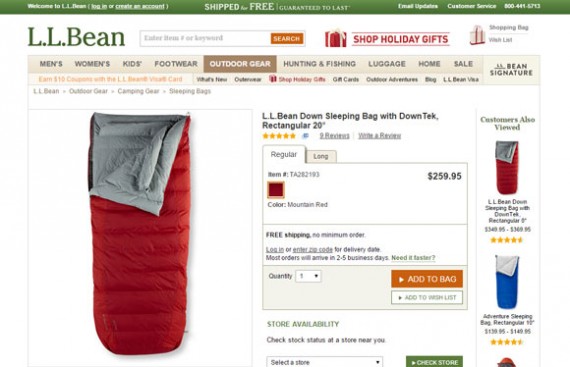Starting an ecommerce business can be fast, relatively easy, and not very expensive. But with something like an 80-percent failure rate, creating a successful online business is more challenging than some entrepreneurs imagine.
Although each new business is unique, there are common contributors to ecommerce failures. Understanding these possible pitfalls should help you to avoid them, beat the statistics, and have a successful ecommerce business.
1. No Real Investment
It is possible to open an online store for just a few hundred dollars. But that in no way means that a few hundred dollars is all that you will need to invest.
Like any new business, a fledgling online store may require several infusions of capital and a significant amount of labor.
Brick-and-mortar retailers are often the worst about adequately investing in an online store. If you already have a physical store and are adding an online shop, think about that new ecommerce business like a new location. It is going to need a similar investment in time and at least a portion of what you would invest in money.
Even relatively small retailers will happily invest $50,000 or $100,000 into a physical store, but decline to spend $5,000 for an online one which may actually have greater sales potential.
2. No Cash Flow
At the most basic level, cash flow is the movement of money into and out of a business. New ecommerce companies can get into trouble when they don’t have enough cash to keep operating. An example of this is when an entrepreneur invests all his cash in inventory and there is no money for marketing — so sales don’t rise and the business is stagnant.
To avoid cash-flow problems, try to spread out expenses, so that everything is not due at once. Look for the opportunity to pay for inventory on terms of 30, 60, or 90 days. Don’t over invest in advertising or would-be search-engine-optimization gurus. Also spend or reinvest based on actual revenue, not projected sales.
3. Poor Inventory Management
Depending on the business model, inventory management can be one of the most significant problems new ecommerce operations will face. Buy too much inventory, and, as mentioned above, you could cripple cash flow. Buy too little inventory and you might be missing out on sales or even disappointing customers.
What’s more, ordering products is often not as simple as you might think. Vendors may have distinctly different lead times, meaning that it might take one supplier a few days to get a reorder to you, while another supplier could take a few weeks, so that you would need to place reorders at very different times and at very different inventory levels.
Freight costs, associated with getting inventory to your business, can also be significant.
4. Too Much Competition
The Internet is a land of opportunity for even the smallest of businesses. But almost no online startup can survive in the face of significant, established competition.
This is most often a problem when new ecommerce stores seek to sell the very same products that are offered by much larger retailers.

Walmart can be serious competition for new ecommerce businesses.
As an example, it could be very difficult for a new ecommerce store to try to sell Microsoft’s Xbox, which is already available at hundreds of online retailers, including Walmart, Amazon, Best Buy, GameSpot, Newegg, Toys”R”Us, and many more.
Simply put, it will be difficult — or at least relatively more difficult — to sell mass-market products than it will be to sell niche or unique products. So find your niche.
5. A Bad Website
Even the best business plan cannot always overcome a bad website.
A modern ecommerce site must be secure, functional, have great search, adapt to mobile devices, and load very quickly. Anything less is unacceptable.
What’s more, there are many excellent ecommerce platforms from which to choose. Many of these require very little technical expertise, so there really is no excuse for having a bad site. (I addressed the many choices of platforms earlier this year, in “Navigating 2014’s Crowded Ecommerce Platform Market.”)
6. Poor Product Photography
Online shoppers cannot physically inspect the products you sell, so they will need a strong visual representation of those products to help them understand it, want it, and buy it. Thus, poor product photography is one of the cardinal sins in online retailing.
Use successful online sellers as the standard for your own product pictures. If the product photography you’re using is not as clear, focused, and clean as what you would find on sites like Zappos, L.L.Bean, Suitsupply, and Best Made, those photos are probably not good enough.

L.L.Bean is an example of a retailer with excellent product photography.
7. No Website Traffic
Few things will kill a retail, or even a wholesale, business as quickly as having no shoppers. In the ecommerce context, website traffic is the flow of shoppers into and out of your store. If you want to make sales, you need traffic.
A fast way to get traffic is with pay-per-click advertising. But it can be expensive, so make certain that you understand it before investing a lot.
A much slower, but ultimately more powerful, way to drive traffic is with content — i.e., content marketing, social media, or on-site product merchandising.
8. No Patience
An ecommerce business takes time to grow. Too often new business owners imagine that they will earn profits immediately. But that is not typically the case. Don’t be surprised if it takes several months to earn even meager profits.




